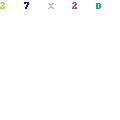
The Best Terminal App For Mac
Mar 21, 2018 - 9 Alternatives for the Apple's Mac Terminal App. ITerm2 lets you slice up a single window into multiple panes, each with its own independent session. Hyper is a terminal app that also supports JavaScript, HTML, and CSS. Upterm calls itself “A terminal emulator for the 21st century.” Terminator.
Hack The Finder The Finder can be hacked a bit using the Terminal, of course, so we figured we could show you a few tricks, too. Here’s how to hack up the Finder a bit to make it work better for you. Show Hidden Files Sometimes you just want to see it all, right?
The Finder hides many configuration files in the finder, some of which you might want to get into to change things. Most of the time, these files should stay hidden or left alone, but we’re not interested in playing it safe all the time.
If you want to see all the files on your Mac for your own reasons, launch Terminal and type or paste in the following command: defaults write com.apple.finder AppleShowAllFiles TRUE Then, issue the command to restart the Finder ( killall Finder) and hit the Return key. If, after you’ve found the hidden files you were looking for, you want to return the Finder to its pristine, hidden-file state, simply do the same thing, except change TRUE to FALSE, and you’ll be good to go. Change Screenshot Formats Sometimes a JPG is all you need. Taking a screenshot in OS X is as simple as hitting Command-Shift-3 for the whole screen, and Command-Shift-4 for a selection portion of your screen. These screenshots end up on your Desktop in the Finder, and by default are PNG files. If you want to change that default to, say, JPG or PDF, simply type or paste the following command into Terminal.
Defaults write com.apple.screencapture type file-extension Just be sure to change “file-extension” above with the three letter suffix for the file type you want. So, if you want your screenshots to default to jpeg files, simply type or paste the following: defaults write com.apple.screencapture type JPG, and you’ll be good to go. Show File Path Info Where the heck am I? Sometimes, it can get confusing as to where you’re at in the Finder, especially if you have a lot of folders open in windows, and they have similar names. A neat way to remind yourself where you are is to enable the Path View in the title bar of your Finder windows.
To do so, simply enter the following into your Terminal app. Defaults write com.apple.finder _FXShowPosixPathInTitle -bool YES Now your Finder windows will all show you the file path structure, so you’ll be able to figure out where exactly you are when you get lost in a plethora of open folders and files. Hack The User Interface Now, let’s look at some commands you can issue in the Terminal to mess around with the user interface, to help you use your Mac the way you want, rather than the way they want. Whoever they are. Disable Window Animations Snappier on that older Mac, for sure. Mountain Lion has a window animation that make things look slick, but can slow down vital workflow, especially on older Macs. To get rid of this subtle but occasionally annoying feature, zoom up to open animation, and issue the following command into your Terminal app: defaults write NSGlobalDomain NSAutomaticWindowAnimationsEnabled -bool false Now the windows will just appear without any opening animations, which should help things feel a bit snappier when running OS X on an older Mac.
Included WD Discovery™ software lets you connect to popular social media and cloud storage services like Facebook, Instagram, Dropbox and Google Drive™ so you can import your photos, videos and docs to the My Passport for Mac drive to help preserve your online life. WD Discovery can also manage your drive through WD Drive Utilities. My passport drive not recognized.
Change false to true to bring it back. Get Rid Of Smooth Scrolling Direct scrolling is the new black. When you launch a Safari window that needs scrolling and hit the space bar, OS X is set up to animate the scrolling down motion, so it feels smooth and silky.

Some users complain about this effect being jerky and unattractive on Retina Macbooks, and would like to disable it. All you need to do is issue the following command into Terminal: defaults write -g NSScrollAnimationEnabled -bool NO Now, when you hit the space bar in Safari or other scrolling windows, it will jump right to the next area on the page, rather than animating down. Change NO to YES to get it back.
Dump The Rubber Banding Effect Too bouncy! When you’re scrolling up or down in any OS X application, including the Finder, you may notice a sort of bouncy, rubber-band effect when you scroll past the top or bottom of a page or list too quickly. This mimics iOS beahvior, which is aesthetically pleasing, but it can be annoying at times, or slow down your process on an older Mac. To get rid of this feature, type or paste the following Terminal command: defaults write -g NSScrollViewRubberbanding -int 0 Now this only works in some apps, so you’ll have to quit them and relaunch to make sure. Safari or Chrome don’t seem to lose the effect, but Finder and Evernote do, so play around with it to see if the apps you want to disable this within will work.